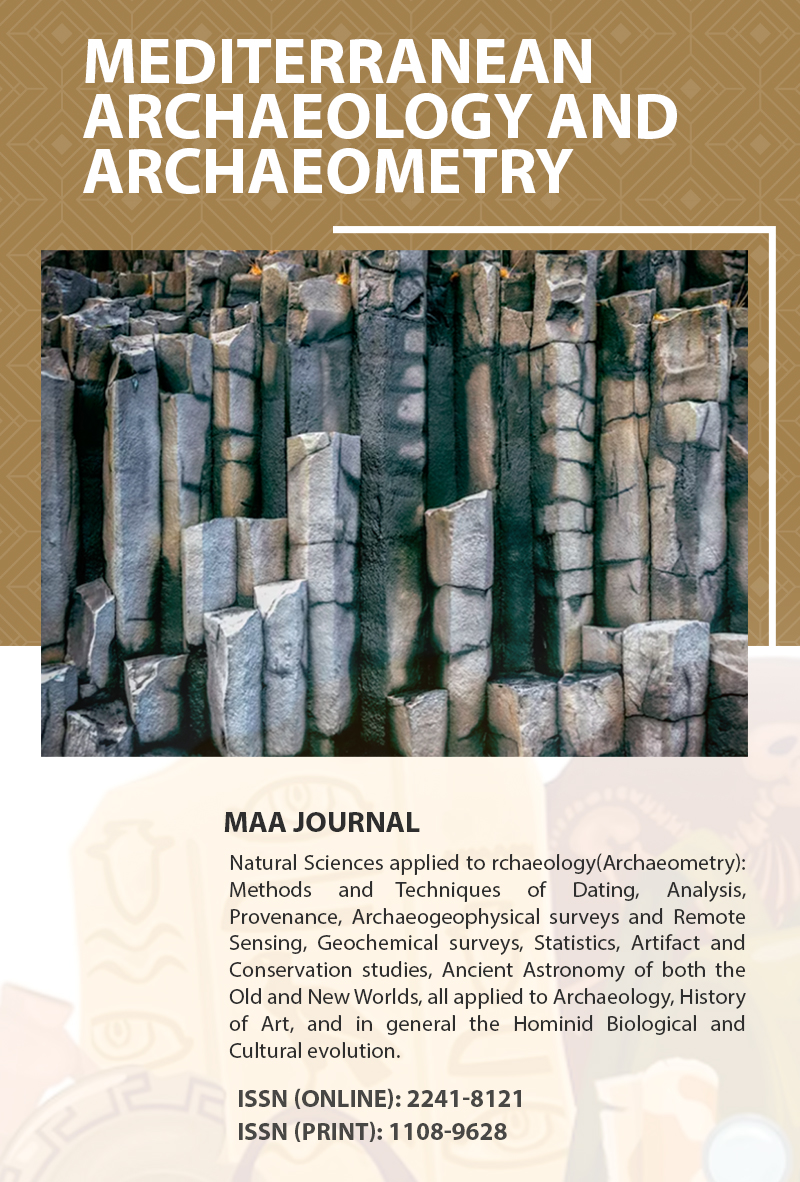THE DOORWAYS OF THE KOUMASA THOLOI AS REGULATORS OF LIGHT AND DARKNESS. IMPLICATIONS OF SUMMER SOLSTICE ALIGNMENT OF THOLOS E.
Keywords:
Aegean archaeology, Minoan tholoi, solar alignment, archaeology of the senses, landscape ar- chaeologyAbstract
A hundred years after the original excavation in Koumasa, a correction of the orientations of the minoan tholoi was observed and documented in 2012. This north-east orientation can largely be understood as an adaptation to the local landscape, which is characterized by a hill directly to the east; a noteworthy fact for one of the largest ensembles of tholoi. The chosen orientation is clearly connected with receiving the direct morning sunlight in the summer months, as noted by the author for various dates throughout observations spanning a multiyear period. This light received through the narrow entrance reaches deep into the tholoi for a narrow timespan due to the rising mountain and the orientation. Most characteristic, however, is the exact orientation of Tholos E to the summer solstice sunrise, a phenomenon whose importance is enforced by the way its interior is lit on this occurrence, with the light reaching almost to the back of the tholos, a display noticeable today. A similar but less centered arrangement is seen for Tholos A. In this paper the measured data will be presented,as well as an interpretation framework for the significance of light in the tholoi as a driving force for this adhoc implementation in Koumasa, backed by suggested sociological factors.










